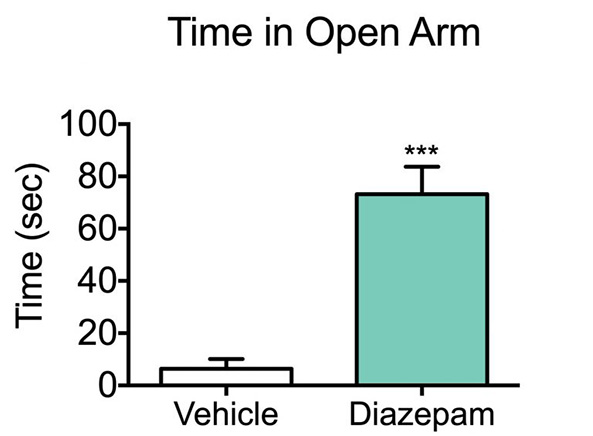Elevated Plus Maze
Discover how Melior’s unique phenotypic screening platforms can uncover the untapped value of your candidate therapeutic
Anxiety is a psychological and physiological state characterized by cognitive, somatic, emotional, and behavioral components.
When rodents are given the opportunity to explore novel environments, they display a typical exploration pattern generally preferring the perimeter of a dimly lit environment to a brightly lit environment.
The Elevated Plus Maze (EPM) or Elevated Maze Test is an animal model of anxiety for evaluating putative anxiolytic (alleviating anxiety) or anxiogenic (anxiety-inducing) compounds. It serves as an alternative and complementary model to the Light Dark Transitions Model as an animal model of anxiety. Unlike some other behavioral models used to assess anxiety responses that rely upon the presentation of noxious stimuli (e.g. electric shock) these two models rely on rodents’ natural proclivity towards dark, enclosed spaces and fear of heights and open spaces.
Validation of the Elevated Plus Maze as an Animal Model of Anxiety. The data above depict the ability of diazepam, a benzodiazepine, to reduce anxiety and increase the amount of time spent in the open arm of the maze compared to vehicle treated Sprague Dawley rats. Data are mean ± SEM; *p<0.05 compared to vehicle (N=8).
The Elevated Plus Maze can be run in either mice or rats. It is most typically run in “acute mode” meaning as a one-day study to evaluate the effects of a compound after a single administration.
The test involves a plus-shaped maze with two open and two enclosed arms. The model relies on the rodent’s tendency to hide in enclosed spaces. Anxiety reduction in this model is measured by an increase in the amount of time spent in the open arms. Anxiolytic drugs that increase GABAergic transmission are reliably effective in this model.


 Interested in running an Elevated Plus Maze study?
Interested in running an Elevated Plus Maze study?